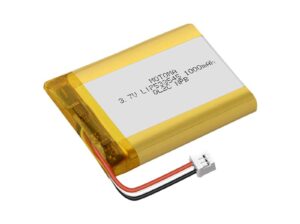Exploring Renewable Energy Resources for Home Energy Management Systems
Over the years, the demand for efficient and sustainable energy management systems for homes has increased. Home Energy Management Systems (HEMS) enable homeowners to optimize their energy consumption, leading to reduced utility bills and a smaller carbon footprint. One critical element of HEMS is the energy source. Renewable energy resources have emerged as the most effective and eco-friendly options. This blog post will explore renewable energy resources and their suitability for Home Energy Management Systems, providing detailed explanations to help homeowners make informed decisions. The first resource we will cover is solar energy.nergy.
Solar Energy
Solar energy is the primary renewable energy source utilized for residential applications. It operates by capturing sunlight to produce electricity through photovoltaic (PV) panels or solar thermal systems. PV systems directly convert sunlight into electricity, which can be utilized to power appliances and charge energy storage systems. Meanwhile, solar thermal systems utilize sunlight to heat water or air for household use. Solar energy is an ideal choice for home energy management systems (HEMS) due to its scalability, low maintenance requirements, and availability in most regions. Homeowners can generate their own electricity and potentially sell excess energy back to the grid, maximizing cost savings. Wind energy is another renewable energy source that can also be utilized.
Wind Energy
Wind energy is an additional renewable energy sources that can be used to save costs. The process of converting wind power into electricity through wind turbines is involved in wind energy. While big wind farms are commonly associated with wind energy, small-scale wind turbines are available for residential use. Wind energy can supplement solar energy in HEMS by providing electricity during periods of low sunlight or at night. However, the efficiency of wind energy in a residential setting is dependent on factors such as wind availability, local regulations, and space limitations. Homeowners interested in wind energy should consider these factors.
Geothermal Energy
Did you know that geothermal heat pumps are a great way to save energy and reduce your carbon footprint? These systems extract heat from the ground during winter and transfer it inside, while in the summer, they extract heat from your home and release it into the ground. Geothermal energy is highly efficient and reliable, providing consistent heating and cooling throughout the year. To install a geothermal system, you need a ground loop system for heat exchange, which can be installed horizontally or vertically depending on the available space. While geothermal systems may have higher upfront costs, they offer significant long-term energy savings and environmental benefits.
Biomass Energy
Although geothermal systems require a higher initial investment, they provide substantial long-term energy savings and environmental advantages. Another renewable energy source is biomass energy, which utilizes organic materials like wood pellets, agricultural residues, or dedicated energy crops to generate heat or electricity. Pellet stoves or boilers can burn biomass to produce heat for space heating or hot water in HEMS. Biomass energy is considered carbon-neutral because the carbon dioxide released during combustion is balanced by plants’ absorption of carbon dioxide during their growth. Nevertheless, we must consider the availability and sustainability of biomass.
Conclusion
It is important to carefully consider the sustainability of biomass, ensuring that it is sourced responsibly and does not compete with food production or contribute to deforestation. When choosing a Home Energy Management System, it is crucial to select the most effective renewable energy resource for maximum energy efficiency and minimal environmental impact. Solar energy is a versatile and widely available option, allowing homeowners to generate their electricity and potentially achieve energy independence. In regions with favorable wind resources, wind energy can complement solar power and provide continuous electricity generation. Although geothermal energy requires a higher upfront cost, it is also an option to consider.
Ultimately, the choice of renewable energy resource for a Home Energy Management System depends on various factors, including location, available space, budget, and energy requirements. Consulting with renewable energy professionals and conducting a thorough assessment of these factors will help homeowners make an informed decision that aligns with their energy goals and contributes to a greener future.
Comments (4)
You must be logged in to post a comment.



[…] is a popular content management system (CMS) used by millions of people across the web. It enables users to create and manage websites […]
[…] It addresses the overall safety of the entire system, including the energy storage device, battery management system, and associated components. This certification ensures that the energy storage system meets […]
[…] with battery safety. It is crucial to develop robust safety features, including improved thermal management systems and advanced battery management systems, to mitigate these risks […]
[…] to maximize the battery life. Managing the SoC and DoD can be done through the use of a battery management system or a charging and discharging schedule. By managing the SoC and DoD, we can ensure that the battery […]